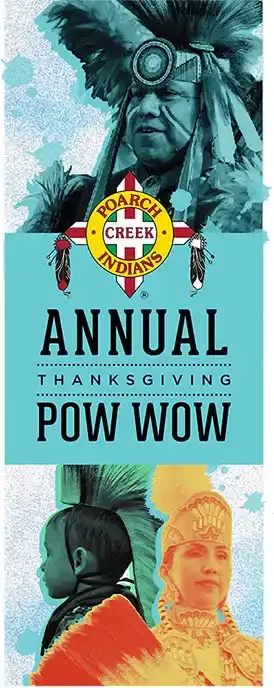History of the Poarch Band of Creek Indians
The Poarch Creek Indians is a segment of the original Creek Nation, which avoided removal and has lived together for nearly 150 years. Despite the policy of removal of Southeastern Indians to Oklahoma, an indeterminate number of Creeks remained in Alabama. The Creek Nation originally occupied a territory covering nearly all of Georgia and Alabama. The War of 1812 divided the Creek Nation between an Upper party hostile to the United States and a group of Upper and Lower Creeks friendly to the Government. The United States provided military assistance when hostilities erupted from 1813 to 1814. Upon victory of the friendly Creek party and their Federal allies, the Creek Nation reluctantly agreed to an enormous cession of land to the United States.
The treaty compelled the Creek nation to cede much of the territory of those friendly to the United States including the present site of Poarch. Those Creeks who had actively fought with the United States were permitted a land grant of one square mile.
Several Creek families, including the Gibsons, Manacs, Colberts and Weatherfords, secured reservations immediately after the treaty. Others, such as Semoice and Lynn McGhee, were unable to file their selections. In 1836, Congress passed an Act allowing Lynn McGhee and the others to set aside 640 acres as reservations under the 1814 Treaty of Fort Jackson.
The United States continued to protect the Poarch settlement after the removal of the main Creek body to Oklahoma in 1836. The Government halted the Escambia County, Alabama, Tax Assessor's illegal taxation of the Federal Trust Land in Poarch in 1920, and instigated litigation which continued to 1925, to penalize trespassers who had cut timber on the grant land. Despite the treaty rights and the fact that no further legislation was passes by Congress, patents were issued for land in 1924.
Today, there are more than 3,000 members of the Poarch Band of Creek Indians of which over 1,000 live in the vicinity of Poarch, Alabama (eight miles northwest of Atmore, Alabama, in rural Escambia County, and 57 miles east of Mobile). A 1972 national study found that among all Creek descendants in the Southeast, only this group at Poarch is still "considered an Indian Community."
Since the early 1900's organized efforts have increased to improve the social and economic situation of the Poarch Creeks. Important educational gains were made in the 1940's. A leader of this effort, Calvin W. McGhee, also pressed for a settlement of and claims case. Eddie L. Tullis became Tribal Chairman in 1978 and led the Poarch Creek Indians in their petitioning the United States Government to recognize a government-to-government relationship. On August 11, 1984, these efforts culminated in the United States Government, Department of Interior, and the Bureau of Indian Affairs acknowledging that the Poarch Band of Creek Indians exists as an "Indian Tribe." The Tribe is the only Federally recognized Tribe in the State of Alabama. On November 21, 1984, 172.31 acres of land were taken into trust. On April 12, 1985, 228.47 acres were declared a Reservation.
The current Tribal Chair and CEO of the Poarch Band of Creek Indians is Stephanie A. Bryan.
